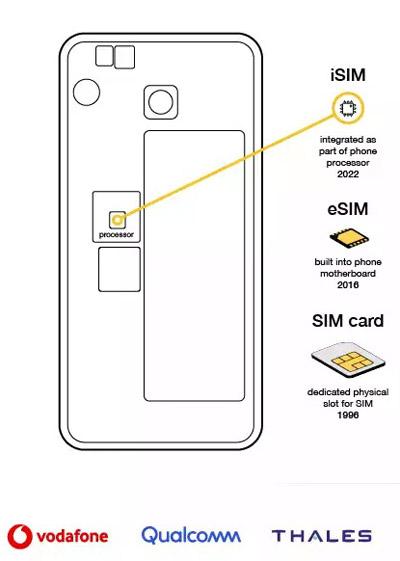If you are using an Android or iOS smartphone, you have a small drawer on one of the slices that allows you to insert one or two telecommunications cards.This is automatically provided by your mobile operator and corresponds to a subscription subscribed to it.If formerly the format of this card was classic, today it is almost exclusively offered in the format of a Nano SIM card.It measures precisely 12.3 mm by 8.8 mm and has existed since 2012.
Before, there was the Mini SIM then the micro SIM.It was in 2017 that the first ESIM solution (Embedded SIM for on -board SIM card) appeared.This is a format supported by several manufacturers, including Apple, Samsung or Google within their device at the motherboard.This is what you could call a virtual card.It has a definite advantage: the possibility of changing operator in just a few minutes, without having to receive a physical card since everything goes through the networks.
The ESIM is offered by all the largest French operators including Orange, SFR, Bouygues Telecom and Free.However, still enough mobiles offer this type of technology.
The isim, what is it?

The isim goes further than ESIM.The I of Integrated Sim is used to train ISIM and signify that the communication device is directly integrated into the main processor of the device whether it is a Qualcomm Snapdragon, a Samsung Exynos or aMediatek Dimensity, for example.The element thus at the heart of the system can exploit the possibilities of the chipset, in particular with regard to its computing power, its communication with the other components and its energy consumption, but above all this makes it possible to obtain reinforced security in terms of material.
In addition, this also makes it possible to free up space inside the mobile phone chassis so that it is occupied by other components to offer other features or offer a more compact device.If the ESIM format does not have a great success, the ISIM feeds more hope by relying in particular on a standardized and recognized format, but also benefits from possible validation via the ESIM infrastructure of the various operators.
Currently, ESIM compatible smartphones are: iPhone 13 Pro Max, iPhone 13 Pro, iPhone 13 Mini, iPhone 13, iPhone 12 Pro Max, iPhone 12 Pro, iPhone 12 Mini, iPhone 12, iPhone 11 Pro Max, iPhone 11 Pro, iPhone11, iPhone XS, iPhone XS Max, iPhone XR, iPhone SE 2 (2020), Google Pixel 6 Pro, Google Pixel 6, Google Pixel 5, Google Pixel 4, Google Pixel 4A, Google Pixel 4 XL, Google Pixel 3, GooglePixel 3 XL, Google Pixel 3a, Google Pixel 3A XL, Huawei P40, Huawei P40 Pro, Huawei Mate 40 Pro, Motorola Razr, Motorola Razr 5G, Oppo Find X3 Pro, Oppo Reno 5 A, Oppo A55S 5G, Samsung Galax Fold,Samsung Galaxy Note 20, Samsung Galaxy Note 20 Ultra, Samsung Galaxy S21 5G, Samsung Galaxy S21+ 5G, Samsung Galaxy S21 Ultra 5G, Samsung Galaxy S20, Samsung Galaxy S20+, Samsung Galaxy S20 Ultra, Samsung Galaxy Z Fold 2, Samsung Galaxy Z Flip, Samsung Galaxy Z Fold3 5G, Samsung Galaxy Z Flip3 5G, Samsung Galaxy Fold, Sony Xperia 10 III Lite and Microsoft Surface Duo.
Tests were carried out on a Samsung Galaxy Z Flip3 with ESIM technology, in particular thanks to its integrated security system within its chipset, the Qualcomm Snapdragon 888.ISIM technology was provided by Thalès using the Vodafone cellular network.There is still a long way before the first compatible devices are available on board this format called to simplify the change of subscription and to offer more security for users and more space for manufacturers.
Medical deserts, public services: what assessment of Macron on rurality?
The best phones in 2021 for photos and video
What is the best Oppo smartphone to choose?
Good Plan: the recap of 4G packages on sale